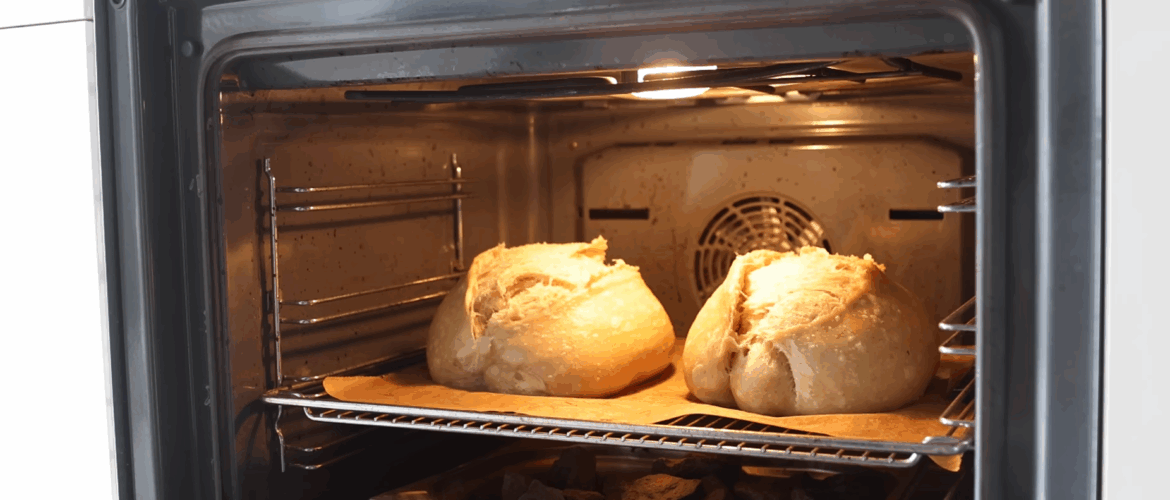At some point, most of us have asked ourselves: Would a small countertop oven be enough, or do we really need a full-size, built-in oven?
It may seem like an easy question, but once we dig deeper, there’s a lot to consider.
A countertop oven is often cheaper, faster, and more energy-efficient. But can it actually do everything a full-size oven can? Let’s find out together.
What Exactly Is a Countertop Oven?
A countertop oven is basically a smaller, portable electric oven that sits right on your kitchen counter. Most models can bake, roast, toast, and broil, and many also come with convection features.
People sometimes confuse them with microwaves, but they’re completely different. A countertop oven is essentially a mini oven, and some newer versions even come with air fryer functions, letting us make crispy food with less oil.
Where a Countertop Oven Wins Over a Regular Oven
Let’s start with the positives.
Energy-efficient – It’s smaller, heats up faster, and uses less electricity.
Quicker to use – Perfect for pizza, snacks, or a quick pastry without waiting 10–15 minutes to preheat a big oven.
Great for small kitchens – No space for a full-size oven? A countertop model fits right in.
Portable – You can take it to a vacation home, dorm, or rental.
Price – A high-quality countertop oven costs just a fraction of a built-in one.
So for everyday meals and quick snacks, a countertop oven often does the job perfectly.
When a Countertop Oven Isn’t Enough
Now for the other side of the story. Regular ovens still have undeniable advantages.
Size – You won’t fit a large casserole, multiple trays of cookies, or a whole turkey inside.
Capacity – Hosting guests? A countertop oven may not keep up.
Heat distribution – While modern versions are improving, big ovens tend to deliver more stable heat.
Durability – Full ovens are built for the long run, while smaller ones usually don’t last as many years.
If you love baking big batches, hosting holiday dinners, or experimenting with bread, a full oven is hard to replace.
What Can You Actually Cook in One?
Surprisingly, a lot! A good countertop oven can handle pizza, roasted veggies, chicken, fish, fries, and even small cakes or cookies.
That said, there are limits. A full-sized loaf of bread or a sheet pan of holiday pastries won’t always fit. It’s much better for smaller portions and everyday use.
Countertop vs. Regular – Who Should Choose Which?
This is where lifestyle makes all the difference.
Singles or couples – A countertop oven is often more than enough.
Families – A full oven is almost always necessary, unless you rarely cook.
Students, renters, or dorm living – The countertop version is practical, affordable, and space-saving.
Passionate home bakers and cooks – Nothing beats a full-size oven.
Energy Use and Costs
With electricity prices climbing, energy use matters. A big oven can draw 2000–3000 watts, while a countertop oven often runs at 1000–1500 watts. That’s a clear difference on the power bill.
But keep in mind, if you run your small oven for hours every single day, the savings may not be as big as expected.
Convenience Matters Too
A built-in oven is always there, ready, and doesn’t take up counter space. A countertop oven, on the other hand, might need to be moved or stored after each use, which some people find annoying.
On the flip side, a smaller oven is quicker, easier to use, and you don’t need to bend down like you do with many built-in ovens.
Tips Before Buying a Countertop Oven
Thinking about getting one? Here’s what to look for:
Size – Measure the trays or dishes you’d like to use inside.
Power – Go for at least 1200 watts, otherwise it may feel slow.
Features – Convection, broil, or air fryer functions can make a huge difference.
Easy to clean – Look for a removable crumb tray and a non-stick interior.
Reliable brand – Better to invest in one that lasts longer.
Maintenance and Safety Tips
This is something we haven’t touched on yet, but it’s a key part of getting the most out of a countertop oven.
Regular cleaning – Grease and crumbs build up faster in a countertop oven than in a full-size one. Cleaning it often prevents unpleasant odors and helps maintain performance.
Safety first – Because it sits on the counter near other items like plastic containers or dish towels, it’s important to leave enough space around it for ventilation and to avoid accidents.
Longer lifespan – Avoid running it for hours at maximum heat. Treating it with care can extend its life significantly.
Accessories – Many brands offer special trays, racks, or baking pans made specifically for countertop ovens. These not only expand what you can cook but also make cleanup much easier.
Conclusion
So, can a countertop oven really replace a regular oven? The answer is: It depends on how you live and how much you cook.
If you cook small meals or bake only occasionally, yes, it could be enough.
If you cook for a family or love doing big batches, no, it can’t fully replace a standard oven.
One thing’s certain: today’s countertop ovens are far more capable than they used to be. In many homes, they make the perfect second oven, especially around the holidays when cooking space runs short.






